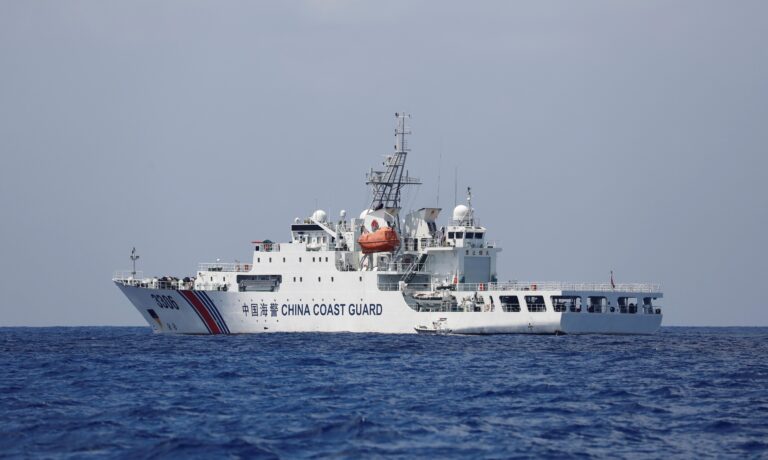Helicopter Incident Intensifies Tensions in East Asia
In a significant development that highlights the ongoing strife in East Asia,a helicopter from the China Coast guard briefly intruded into Japanese airspace near the contentious Senkaku Islands,as reported by Kyodo News. This incursion, occurring in an area claimed by both nations, underscores the fragile equilibrium of sovereignty and security within one of the globe’s most disputed maritime regions. Following this violation, Japan’s government promptly lodged an official protest, reflecting persistent geopolitical tensions between China and Japan amid escalating military activities nearby. Observers are closely watching this evolving situation due to its potential ramifications for regional stability and diplomatic relations in the turbulent waters of the east China sea.
China Coast guard Helicopter Intrusion Heightens Regional Tension
The recent entry of a China Coast Guard helicopter into Japanese airspace close to the disputed Senkaku Islands has escalated tensions in an already precarious region.Even though this incident lasted only a few minutes, it serves as a stark reminder of ongoing territorial disputes that have historically strained relations between Tokyo and Beijing. analysts warn that such provocations could lead to increased military posturing in an area vital for maritime security and international trade.
In light of this latest breach of airspace, Japan’s government issued a formal protest emphasizing its dedication to maintaining national sovereignty. Key aspects surrounding this incident include:
- Immediate Response: The japanese Self-Defense Forces were quick to monitor developments closely and dispatched aircraft as necessary.
- Geopolitical Consequences: Experts believe that this incursion reflects China’s growing assertiveness in the East China sea, complicating diplomatic interactions further.
- Future Considerations: Japan may need to enhance its surveillance capabilities and military readiness to deter similar incursions moving forward.
Impact on Japan’s National security Framework and Maritime Strategy
The recent intrusion by a Chinese Coast Guard helicopter into Japanese airspace raises critical concerns regarding japan’s national security strategy.This event highlights shifting dynamics within the East China Sea while presenting strategic challenges for Tokyo.as tensions over territorial claims continue between china and Japan, there might potentially be pressure on Japan to reassess its defense posture along with surveillance capabilities. Analysts suggest that such incidents could prompt enhancements in air defense measures aimed at safeguarding sovereignty while establishing stronger deterrents against future violations.
To counter these provocations effectively, Japan might consider recalibrating its maritime policy towards greater collaboration with regional allies. strengthening partnerships can help create a unified front against aggressive actions from neighboring countries. important implications for maritime policy include:
- Enhanced Patrols: Increasing maritime surveillance operations around the Senkaku Islands is essential.
- Cementing International Alliances: Fortifying relationships with nations like the United States can bolster collective security efforts.
- Cohesive Military Drills: Engaging in joint military exercises will improve response strategies among allied forces.
- Diplomatic Engagements: Initiating discussions focused on maritime safety can definitely help mitigate conflicts before thay escalate further.
Importance of Diplomatic Engagement and Regional Collaboration
The recent breach involving a Chinese Coast Guard helicopter entering Japanese airspace over Senkaku Islands emphasizes an urgent need for enhanced diplomatic dialog among regional stakeholders. As tensions rise within these contested waters, it is crucial for nations like Japan, China, and their neighbors to prioritize open dialogue channels aimed at preventing misunderstandings that could spiral into larger confrontations. increased diplomatic initiatives can foster better comprehension regarding territorial disputes while promoting shared interests related to maritime safety—ultimately contributing toward stability across Southeast Asia.
A variety of initiatives can strengthen regional cooperation including but not limited to:
- Cohesive Maritime Exercises: Conducting collaborative training operations fosters trust among participating nations while enhancing overall readiness levels against potential threats.
- Sustained Diplomatic Meetings:</ strong Regularly scheduled dialogues provide opportunities for addressing grievances proactively before they escalate into serious conflicts.
- Conflict Management Protocols: Establishing clear procedures designed specifically for managing unexpected encounters at sea minimizes risks associated with navigation.
By engaging constructively through dialogue alongside cooperative measures implemented across affected countries; all parties involved stand poised towards achieving more peaceful coexistence amidst complex geopolitical realities—while ensuring their respective national interests remain safeguarded under mutual respect frameworks.
Concluding Remarks
The recent intrusion by a Chinese Coast Guard helicopter into Japanese territory near Senkaku Islands serves as yet another indicator highlighting ongoing frictions present throughout East Asian geopolitics today . This incident , reported initially via Kyodo News , illustrates how intricate marine disputes continue shaping both local security landscapes & broader international relations .As each nation navigates differing claims over territory ; experts caution about possible escalatory outcomes stemming from aerial maneuvers observed recently. Moving forward , global observers will undoubtedly keep vigilant watchful eyes trained upon any subsequent developments impacting bilateral ties between both states — particularly concerning their roles within wider contexts surrounding regional stability .
- Conflict Management Protocols: Establishing clear procedures designed specifically for managing unexpected encounters at sea minimizes risks associated with navigation.




